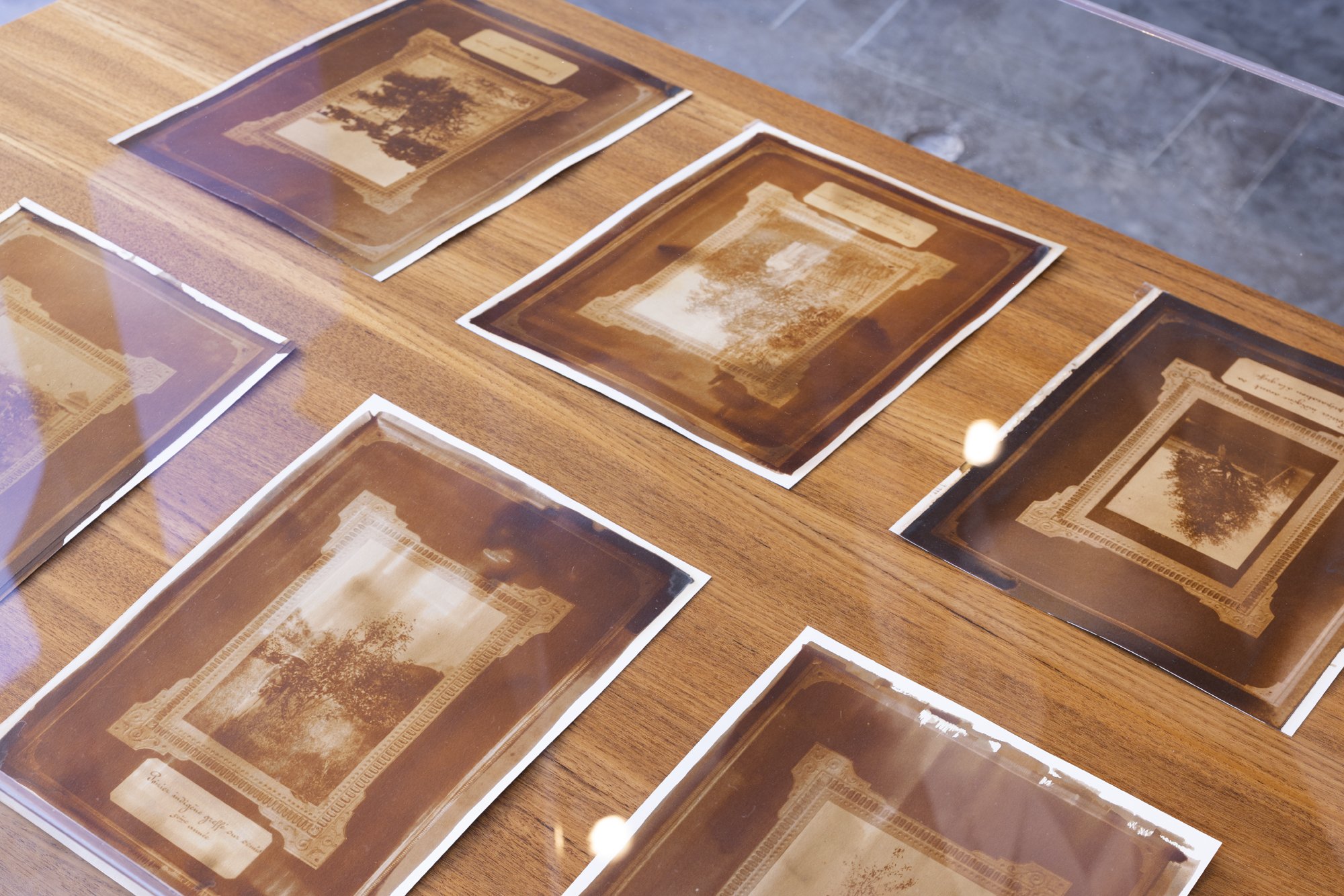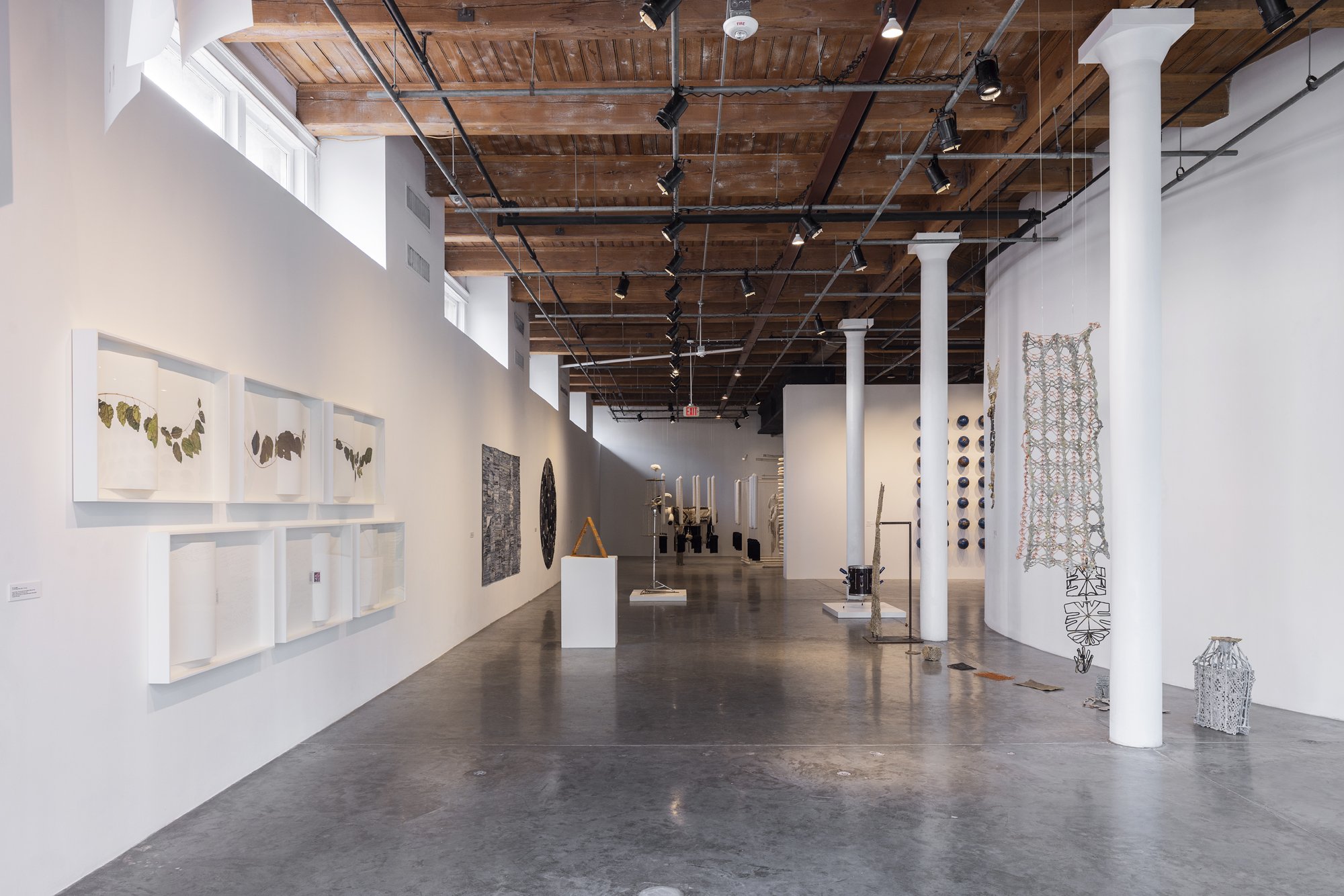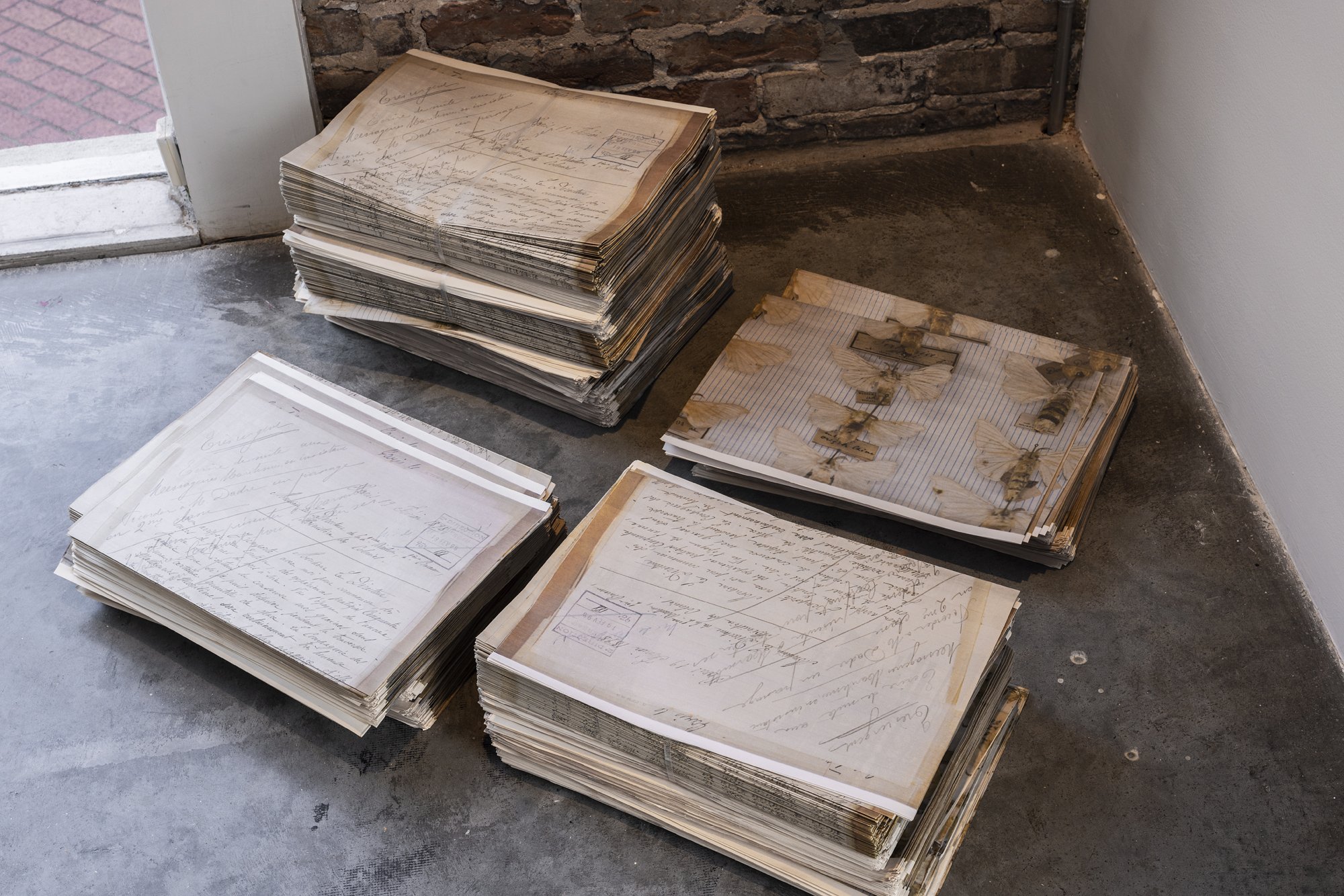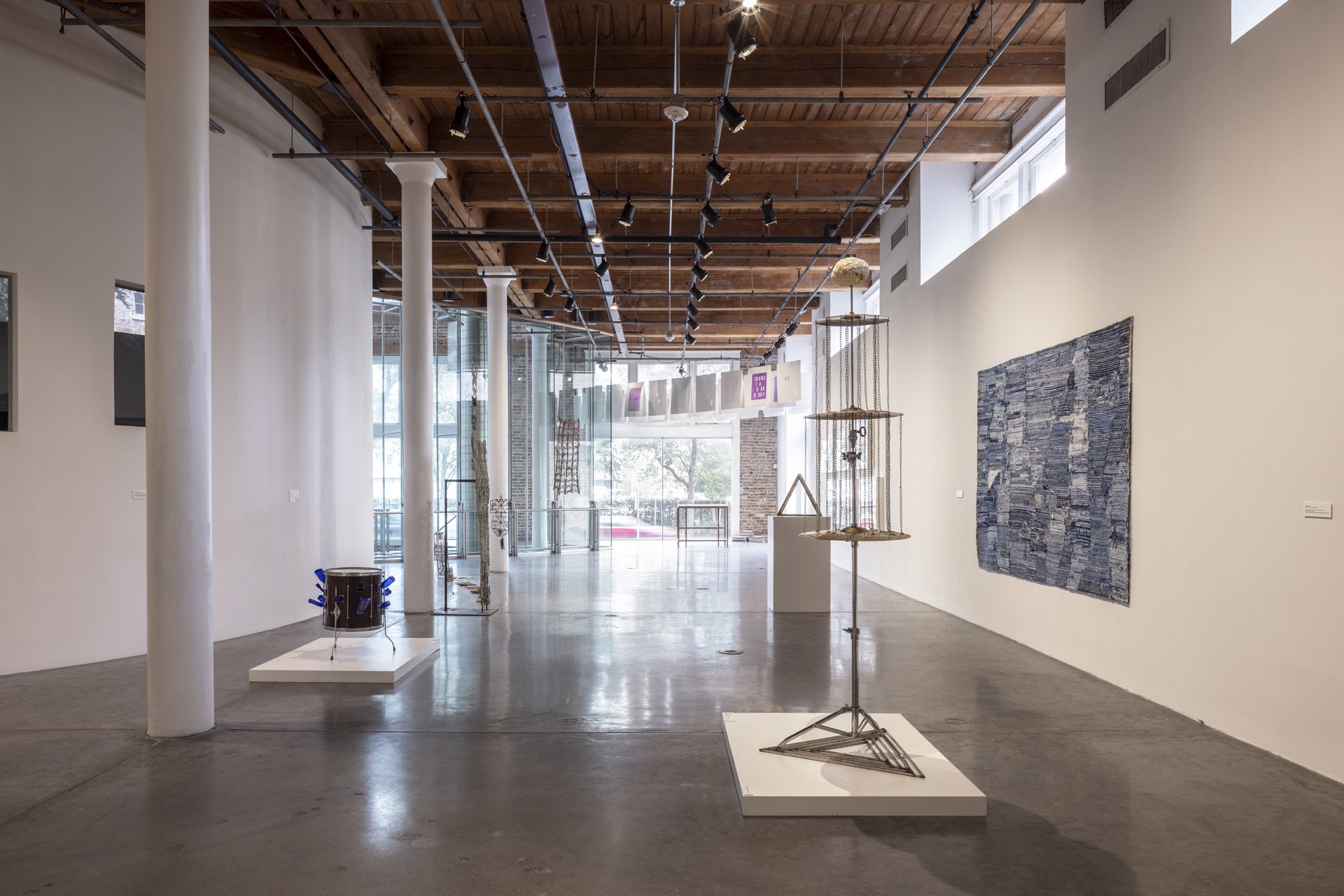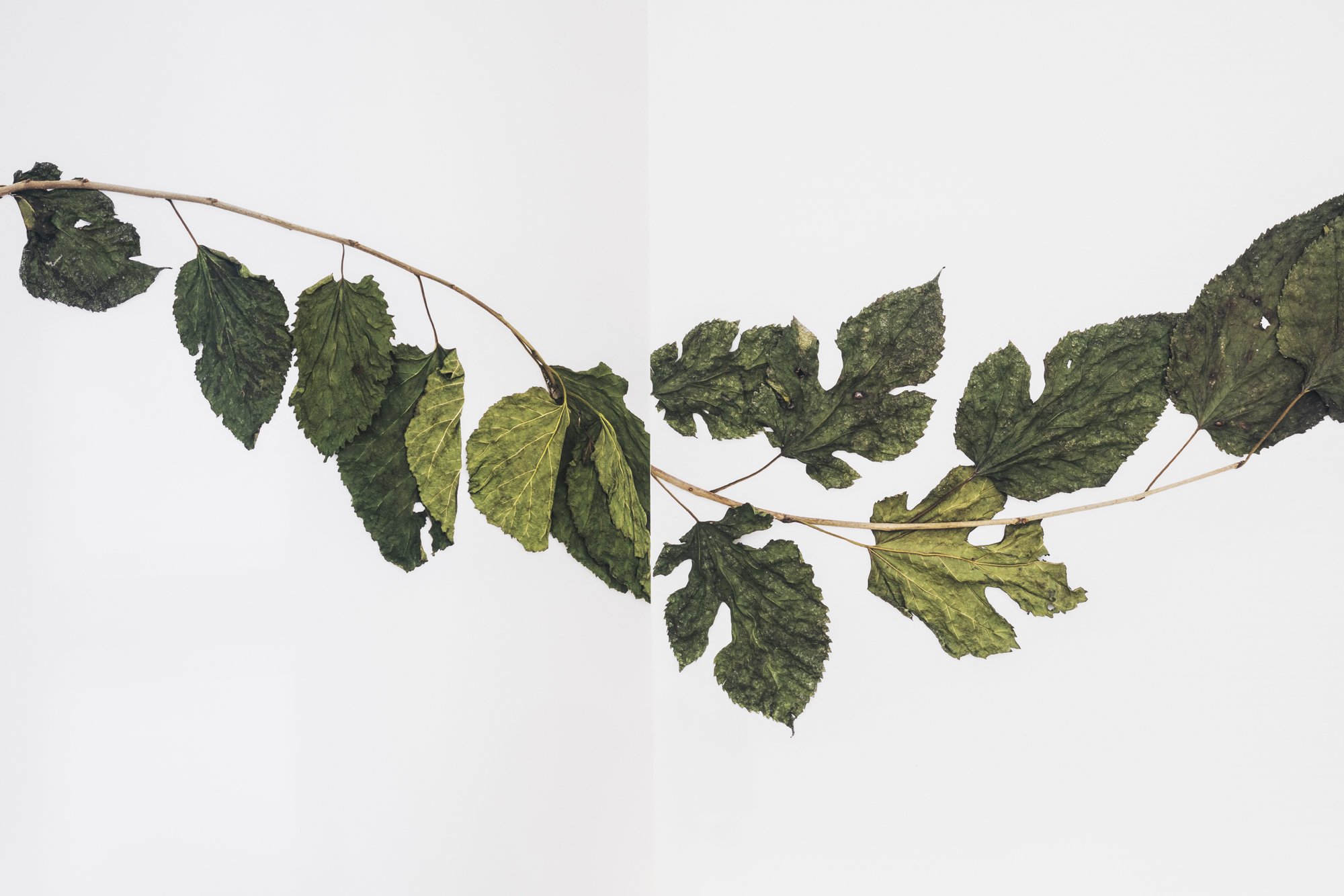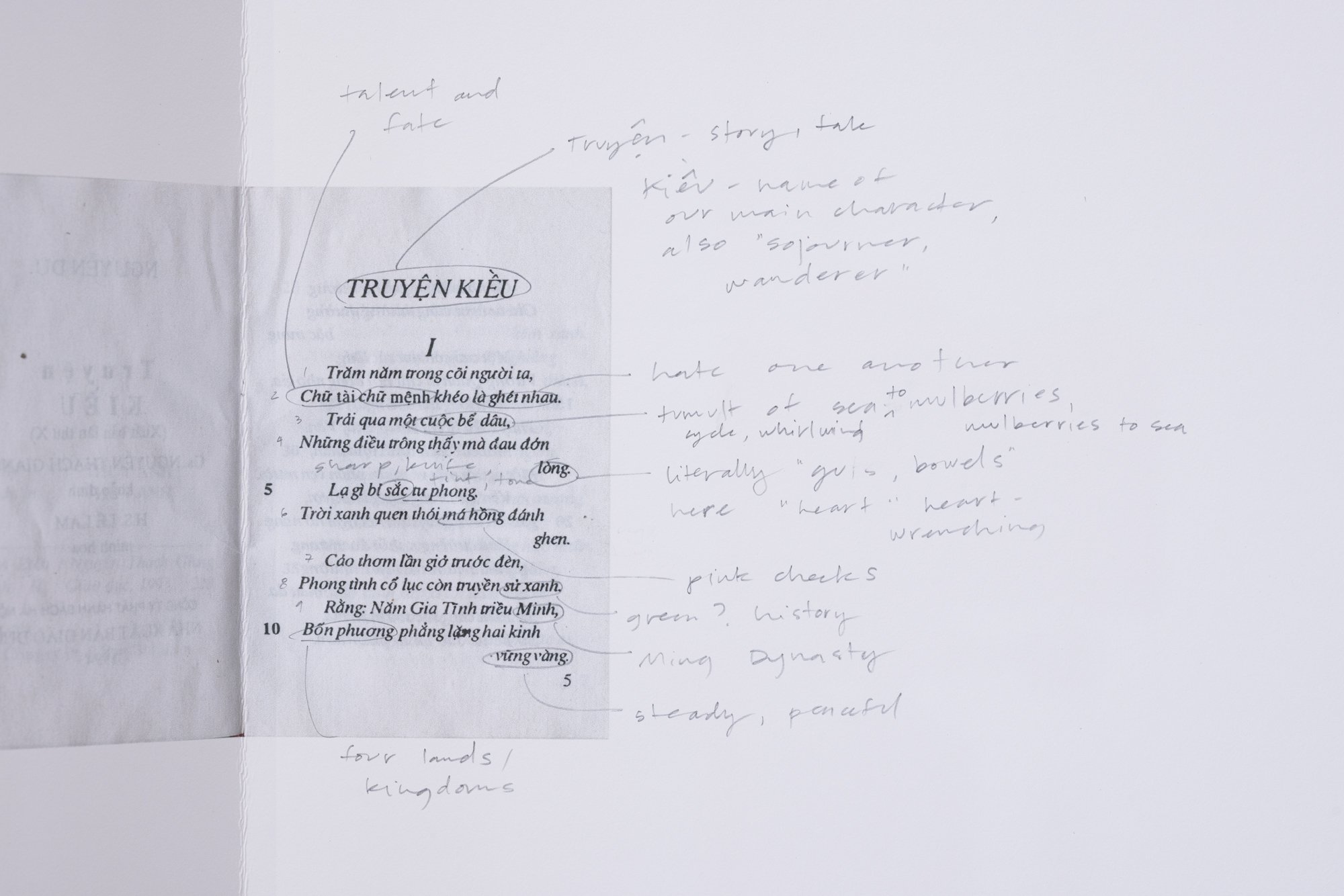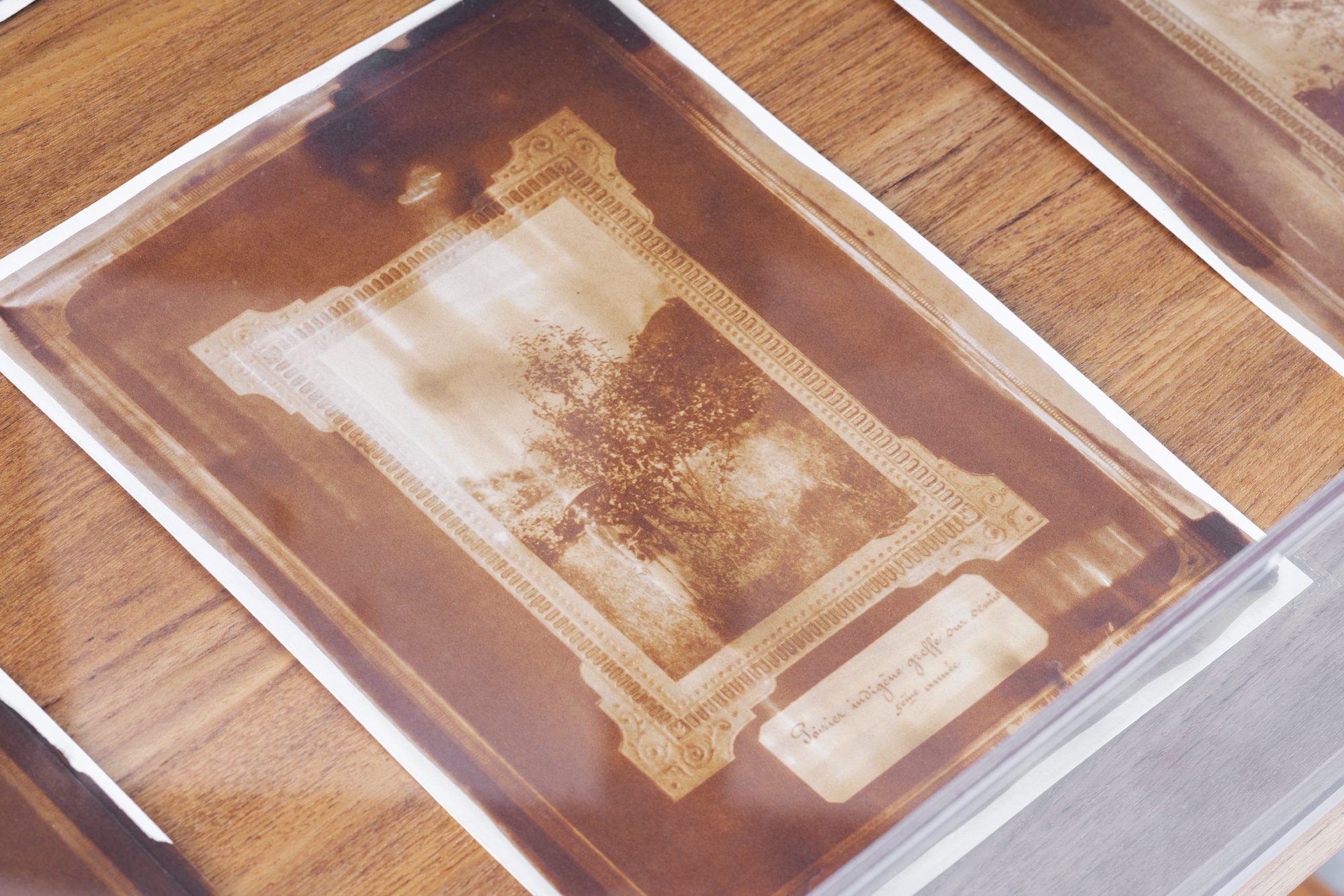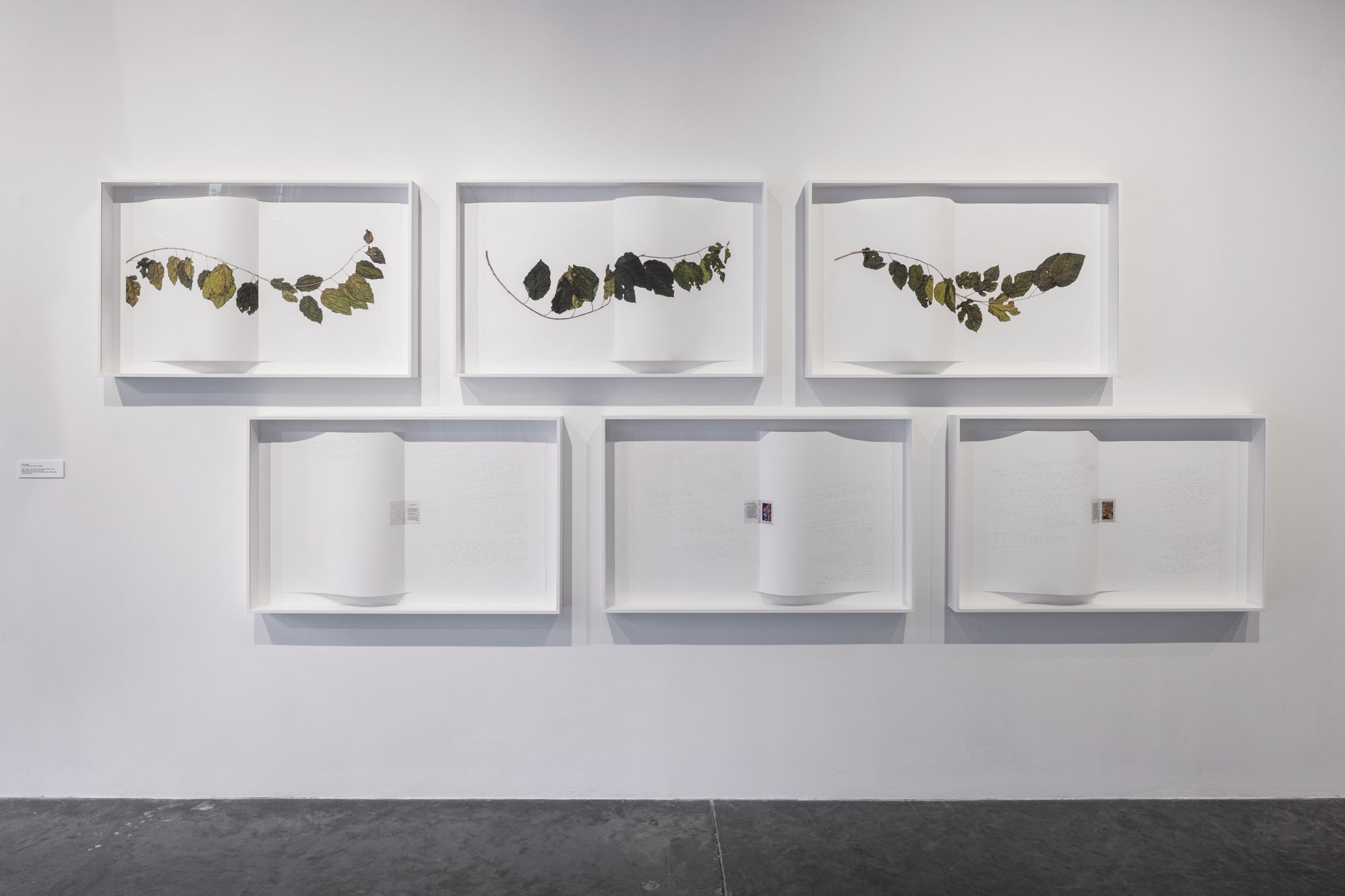
Cuộc bế dâu/ The sea turns into mulberry fields and the mulberry field turns into the sea
Archival pigment print on Hahnemüehle paper with graphite, hectographic prints, newspapers unfixed Van Dyke prints and custom vitrine
2021
Hương Ngô’s installation explores translations across cultural contexts and across objects, beings, and ideas. She uses archival imagery and printed media to draw together the histories of French colonial practices around agriculture, labor, economy, and environment in Vietnam and Louisiana. In both colonial encounters, the French attempted––and failed––to import their form of silk trade. As Ngô details in her newsprint takeaway, the Vietnamese had a thriving silk industry that the French disrupted with the unsuccessful introduction of their own silkworms and different technologies, and the establishment of the silk industry in Louisiana likewise failed, overtaken by cotton. While reproductions of archival materials displayed in the handcrafted case show images of colonial farming in Vietnam, the artist has framed and preserved images of branches taken from mulberry trees in New Orleans, an invasive reminder of the presence of French colonialism.
Ngô is keenly aware of how these histories reverberate in the present—in the populations of Vietnamese, Native, and Black people who have passed through and remain in Louisiana and in the altered landscape that we inhabit today. The hectograph-print posters hanging from the rafters declare in Louisiana Creole, Kouri-Vini, and Vietnamese: “We are still here.” These low-tech, highly accessible prints created using a water solution reference the Communist anti-colonial movement that employed this medium to swiftly disseminate sensitive information. In New Orleans, hectography takes on added layers of meaning because the printmaking process relies on the use of water, a force that has brought commerce and life to the port city while harboring potential violence. The newsprint takeaway that accompanies this installation, along with the other forms of print material, details the artist’s own interventions into these histories, weaving together seemingly disparate narratives to reveal and fill crucial gaps in the archives.
Text courtesy of Prospect.5. Photos: Alex Marks.

